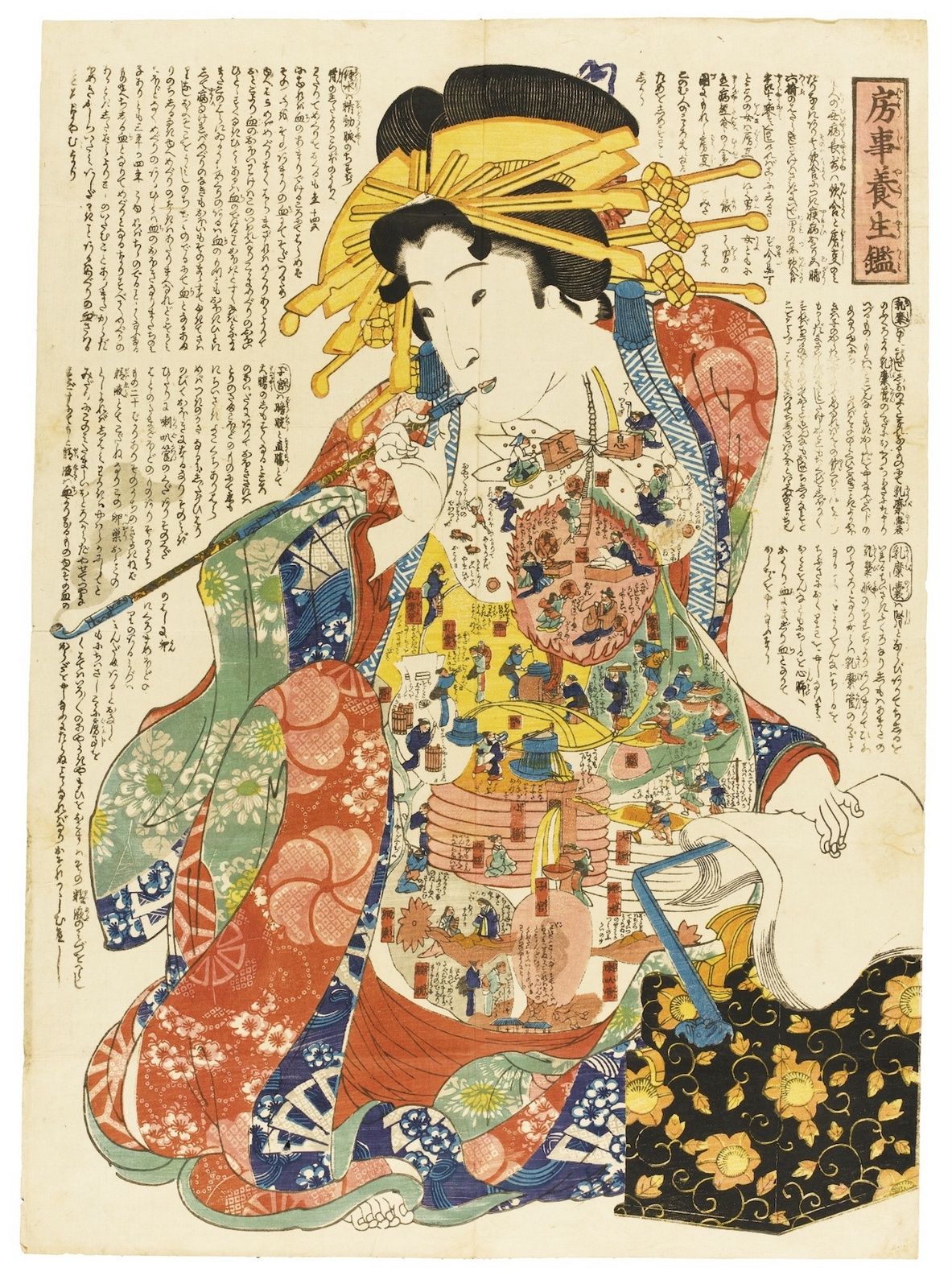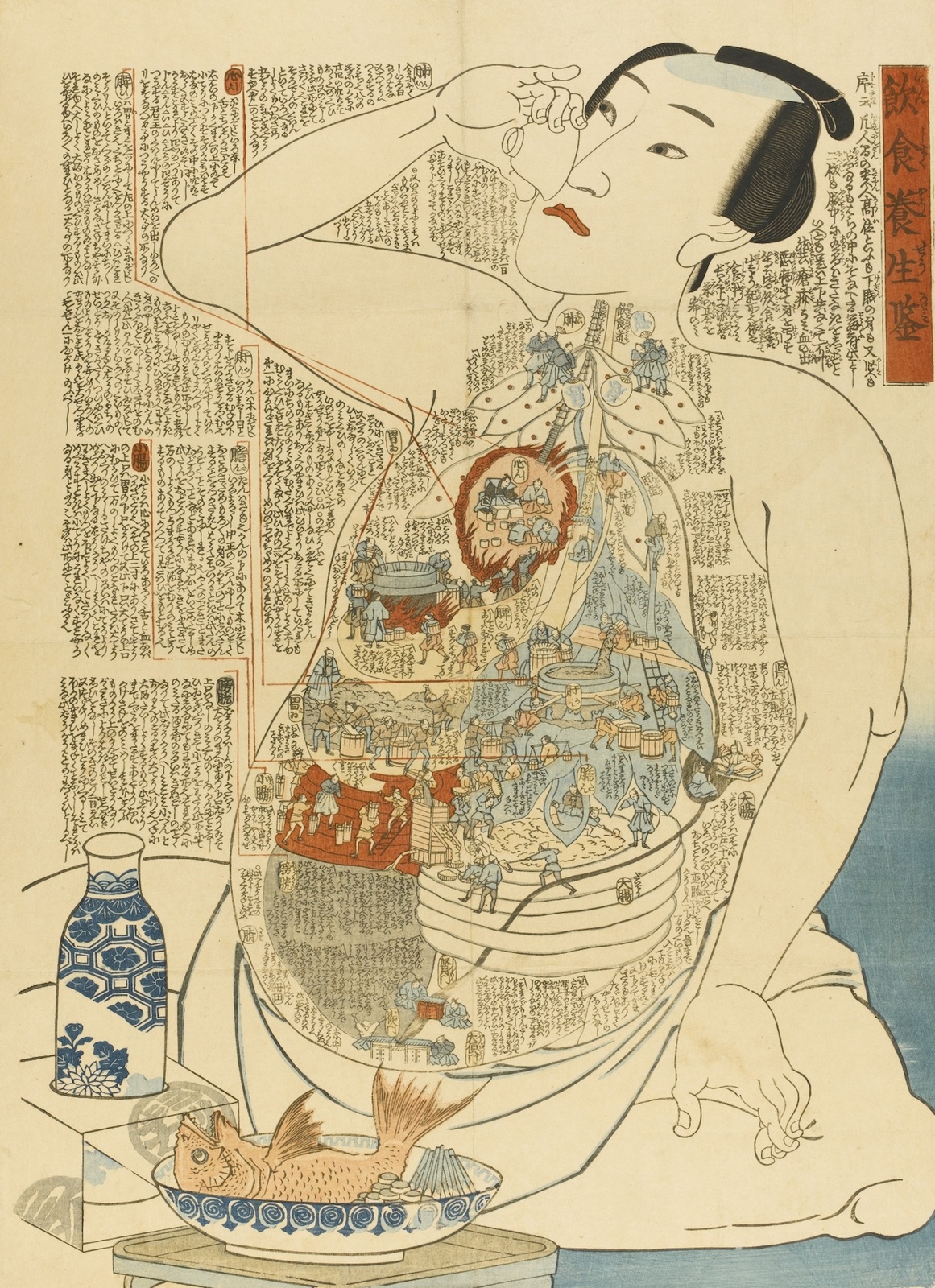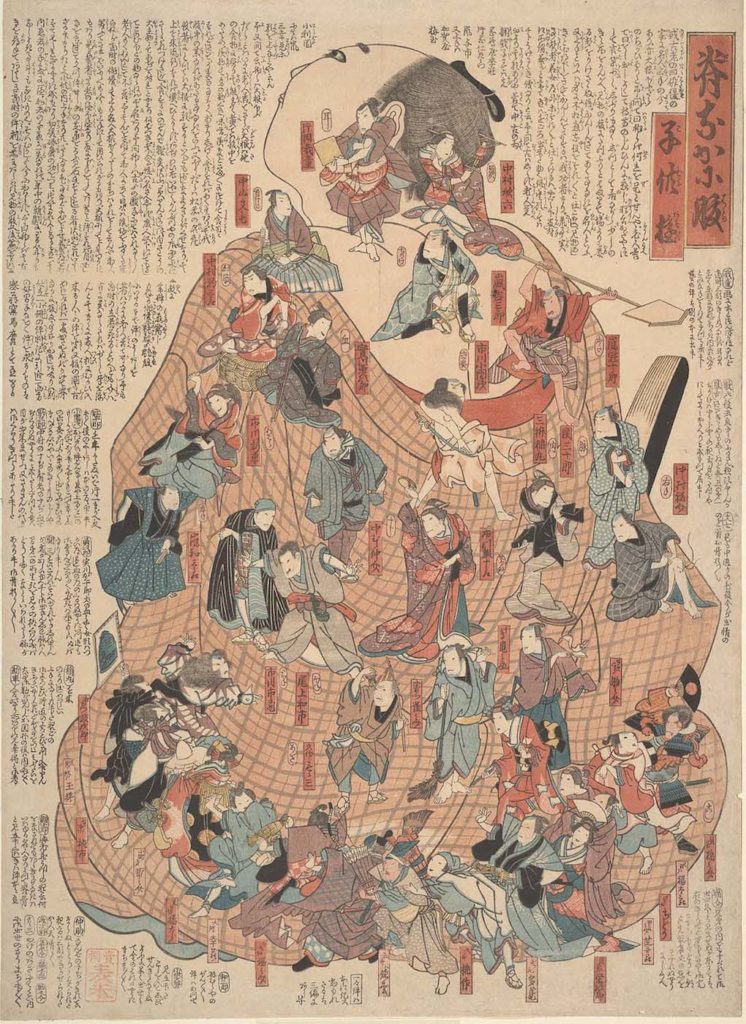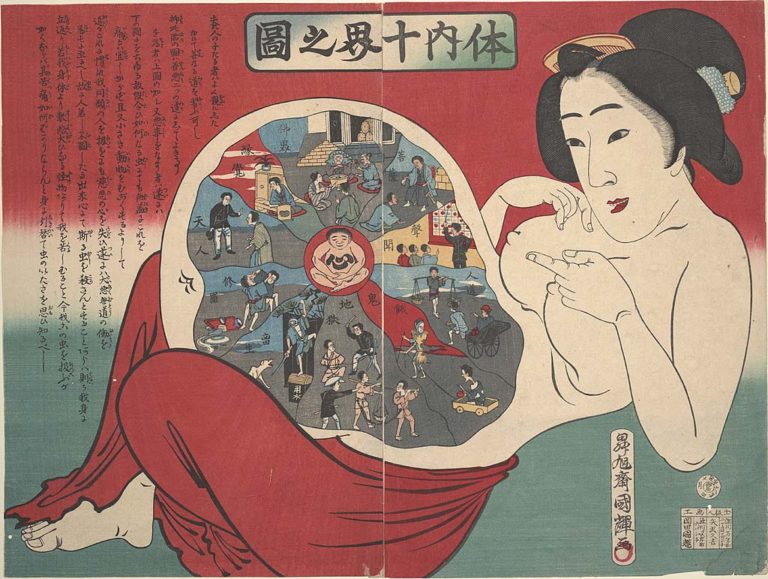In the mid-19th Century, Japanese artists like Utagawa Kunisada (1786-1865) and Utagawa Kuniyoshi (1797-1861) depicted the working of your mind and body with lots of little people doing lots of things to make you work in Ukiyo-e, or “pictures of floating worlds”. These busy, intricate woodcuts have something of ‘Where’s Wally?’ about them.

Kinrai ryūkō kabuki uwasa Kenbutsu no hara : Internal bodily functions dramatized by popular kabuki actors
Woodcut – Unknown artist

Shinō kōshō gozō no nazorae : Suffering, death, and effective life : metaphorical classifying organs according to 4 levels of social status, shinō kōs hō (samurai, farmer, artisan, merchant)
Creator: Rodonsai, Nozoki Shōshiki
Via: USCSF – which has great library of Japanese woodcuts
Would you like to support Flashbak?
Please consider making a donation to our site. We don't want to rely on ads to bring you the best of visual culture. You can also support us by signing up to our Mailing List. And you can also follow us on Facebook, Instagram and Twitter. For great art and culture delivered to your door, visit our shop.





